A Rare Coronary Anomaly: congenital Absence of the Left Circumflex Artery?
Robert Tonks*, Rajiv Sharma and Raj Baljepally
University of Tennessee Medical Center, Heart Lung Vascular Institute, Department of Cardiology, Knoxville, TN
*Address for Correspondence: Robert Tonks, University of Tennessee Medical Center, Heart Lung Vascular Institute, Department of Cardiology, 1924 Alcoa Hwy, Knoxville, TN 37920, USA, Tel: +1-865-111-2183; E-mail: [email protected]
Submitted: 04 March 2019; Approved: 20 March 2019; Published: 23 March 2019
Citation this article: Tonks R, Sharma R, Baljepally R. A Rare Coronary Anomaly: congenital Absence of the Left Circumflex Artery. Int J Clin Cardiol Res. 2019;3(1): 006-008.
Copyright: © 2019 Tonks R, et al. This is an open access article distributed under the Creative Commons Attribution License, which permits unrestricted use, distribution, and reproduction in any medium, provided the original work is properly cited
Keywords: Anomalous coronary artery; Congenital anomaly; Left circumflex artery absence
Download Fulltext PDF
Congenital anomalies of the coronary vasculature are usually asymptomatic and rare with an incidence of less than 1% and there are few cases reported of congenital absence of the left circumflex artery. It is important to recognize this anomaly and define the anatomy by left heart catheterization or coronary angiography by computerized tomography when considering percutaneous intervention or coronary artery bypass surgery on patients without a left circumflex artery.
Manuscript
71 yo male that recently moved to the area from out of state who presented to clinic complaining of increased fatigue, exertional chest pain and dyspnea that resolved with rest. His past medical history is significant for coronary artery disease with a drug eluting stent in the right coronary artery, hypertension, hyperlipidemia, diabetes and history of tobacco and alcohol use.
He had an abnormal stress test in the recent past but refused to have a cardiac cath at that time since his symptoms had temporarily improved. However, when he began having similar symptoms with exertion again, he returned to the clinic and was scheduled for diagnostic left heart catheterization. During the left heart catheterization, the patient was found to have a long left main coronary artery giving rise to with high grade stenosis in the ostium of the left anterior descending artery (Figure 1-3) as well as a high grade stenosis in the right posterior lateral branch of the expansive right coronary artery network. The right coronary artery was very extensive, providing perfusion to a significant portion of the lateral myocardial wall (Figure 4). Multiple attempts were made with various catheters, multiple operators and several aortograms (Figure 5) were performed with no sign of the left circumflex artery. It was determined that the patient had a congenitally absent left circumflex artery with a super-dominate right coronary network to supplement the left coronary arteries.
Comments
Congenital anomalies of the coronary vasculature are usually asymptomatic and rare with an incidence of less than 1% [1]. Complete absence of the left circumflex is an extremely rare finding with reported incidence of only 0.003% [2]. There are few cases reported of congenital absence of the left circumflex artery but in each case there is an elongated left main coronary artery (Figure 1), substantial diagonal branches from the left anterior descending artery (Figure 2 & 3), and a super-dominate right coronary artery (Figure 4) to perfuse the lateral wall. It is important to recognize this anomaly and define the anatomy by invasive coronary angiography or through non-invasive magnetic resonance or computerized tomography imaging modalities, when considering percutaneous intervention or coronary artery bypass surgery on patients without a left circumflex artery [3].
- Moscucci M. Grossman and Baim’s cardiac catheterization, angiography, and intervention. 8th ed. Philidelphia: Lippincott Williams & Wilkins; 2015. pp. 335-353. https://goo.gl/bPrMCt
- Ali M, Hanley A, McFadden EP, Vaughan CJ. Coronary artery anomalies: a practical approach to diagnosis and management. Heart Asia. 2011; 3: 8-12. https://goo.gl/DJwNhF
- Page HL, Engel HJ, Campbell WB, Thomas CS. Anomalous origin of the left circumflex coronary artery: recognition, angiographic demonstration and clinical significance. Circulation. 1974; 50: 768-773. https://goo.gl/TyQrmD
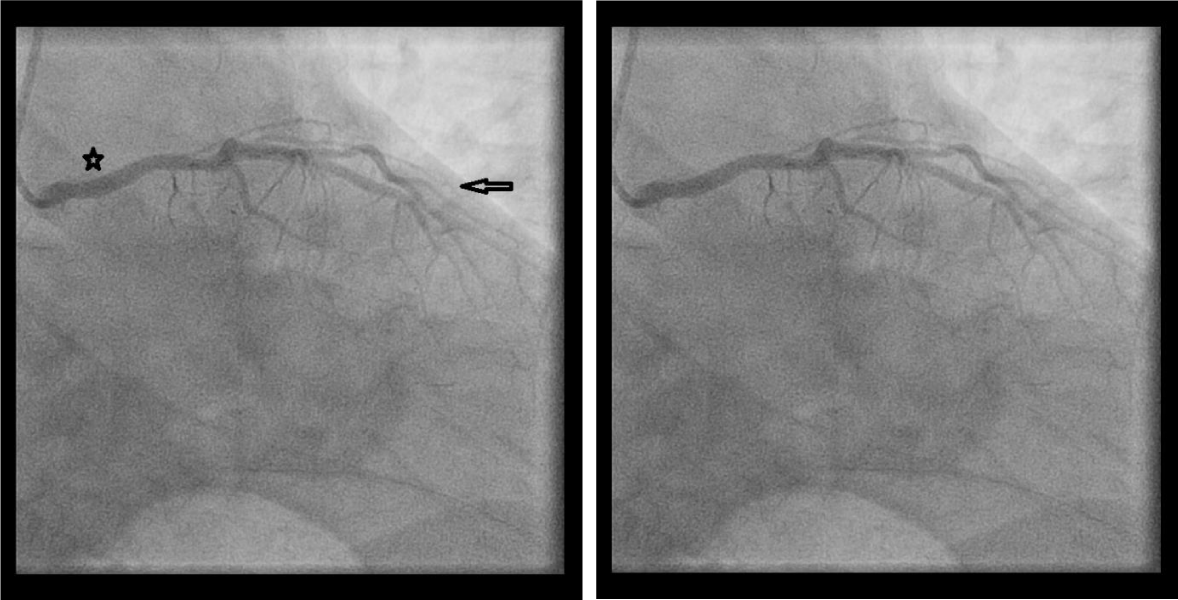
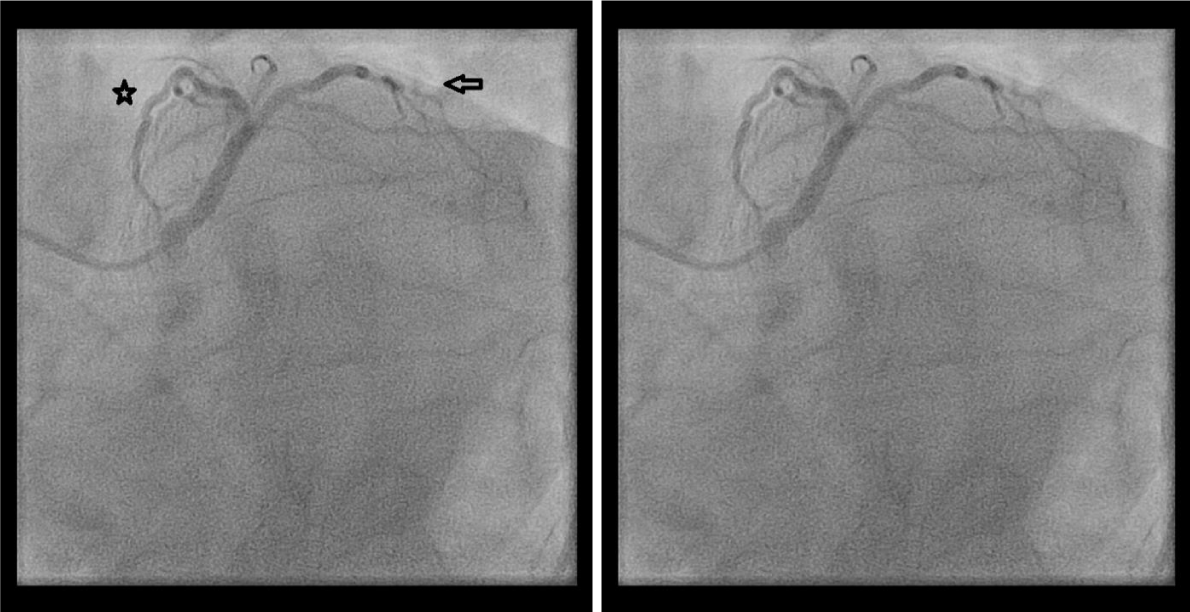
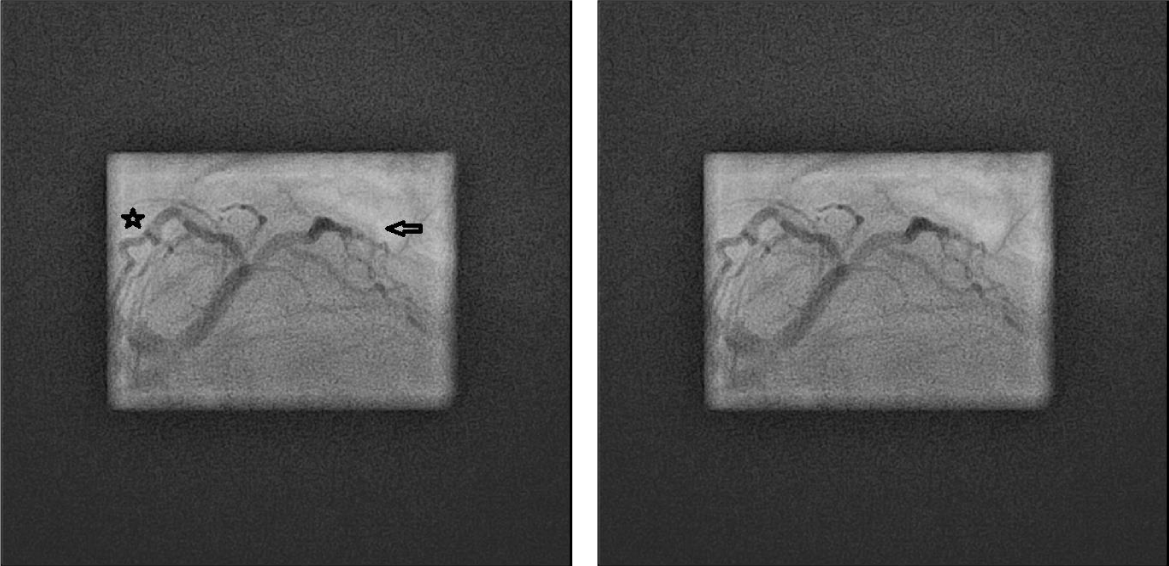
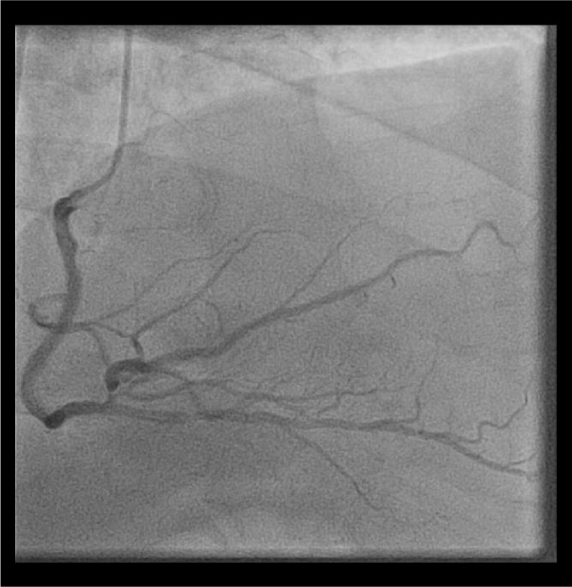
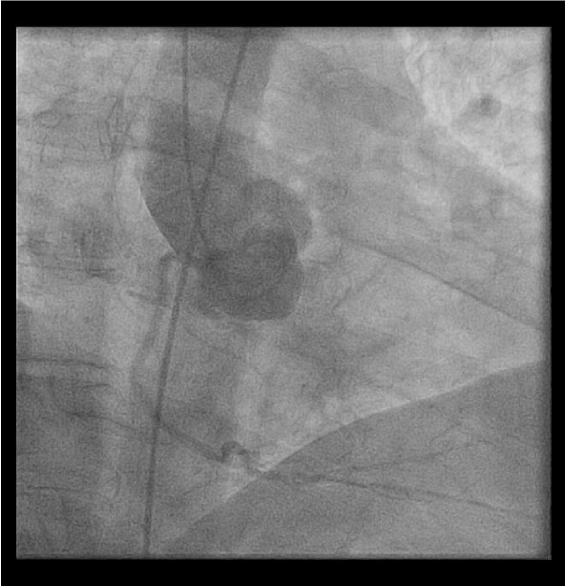

Sign up for Article Alerts